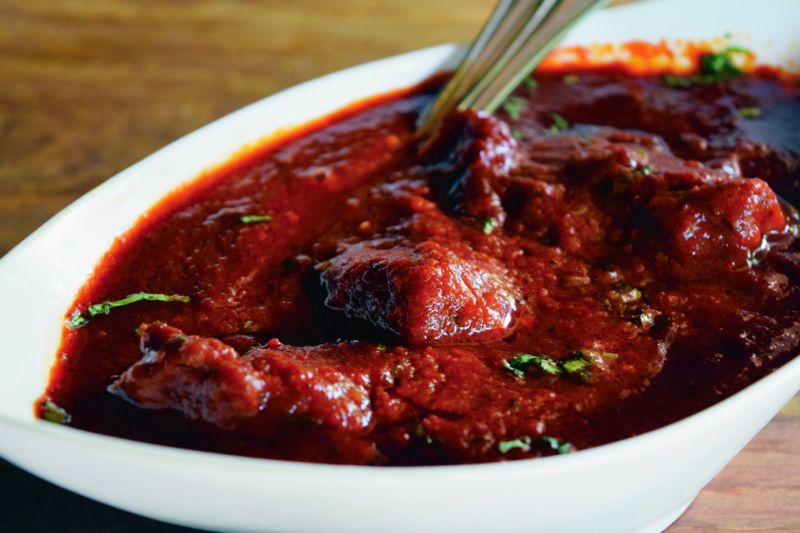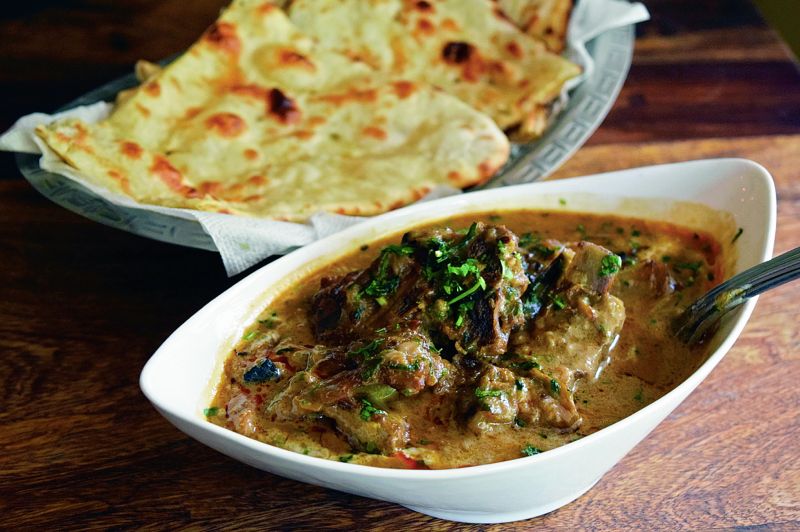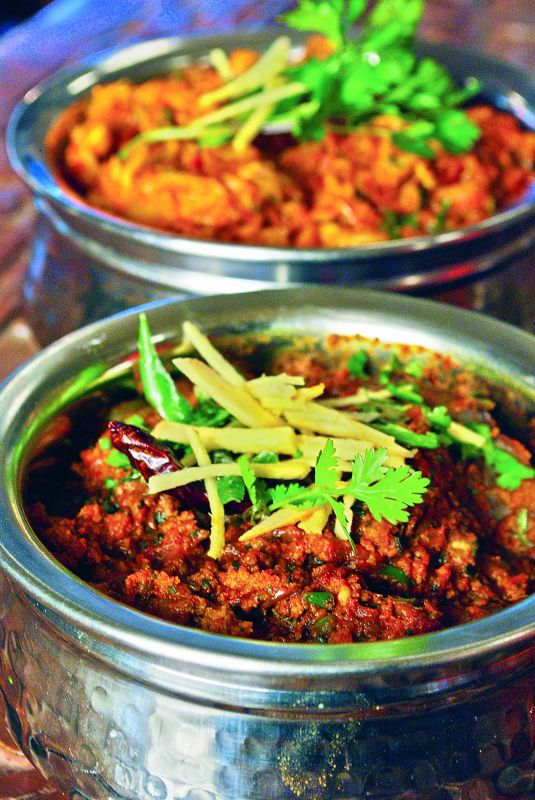Game for cooking

I’m sitting in beautiful yet scorching hot Jodhpur sun with members of the royal family, reminiscing on how the shikaar inspired several culinary dishes and celebrations in the past. In fact, most of the royal cuisine in this region — at least the non-vegetarian dishes, trace their history to being cooked with exotic shikaar. In the earlier times, Maharajas across Jodhpur, Jaipur, Udaipur, and Alwar used to organise shikaars — both expeditions or camps and Dukes and Duchesses, Viceroys and other foreign dignitaries were often invited to witness the live catch.
Cooks who specialised in game meat cooking were hired for the royal kitchens. Full wild boars, camels stuffed with goats, finely cooked peacock… walk down the culinary historic path and these were the challenges that the royal rasoi had to deal with night after night. And these dishes were not just about the animal, but also put together with two key styles of cooking — one that the large animal was usually stuffed with something more exotic than the West’s ideas of spinach and ricotta; and secondly, all cooking was done on slow fire or dum methods.
One of the favourites of dum style cooking was a cooked rabbit or khad khargosh. Stuffed rabbit was covered with layers of rotis wrapped in a soft mulmul cloth, plastered with wet mud and cooked in an open pit with kaachri, which was used as a tenderiser for the meat.
Indulging in Shikaar represented quality game, and spoke of the privileges of belonging to a royal lineage. Unlike Delhi and North during the Navratri, the royalty residing in the deserts of Rajasthan relish dishes that are exclusively made from the khajro or meat of the goat that is slaughtered before the family Goddess Chamunda, as an offering.
I still remember meeting Bapji several years ago, when he spoke about several excursions during his childhood where they spent the day hunting (only hare and sandgrouse, he clarified), and then the whole family competed in a cookout with their grandmother judging the best dish of the day. These picnics continue sans hunting, but with enough gaiety and barbecue.
And from these shikaars have emerged some popular dishes, though today the game meat has been replaced by goat meat and chicken. For starters, there are the two popular dishes — junglee maas and laal maas, which were cooked using the wild boar or deer meat. While the former was a no-frills dish cooked in basic spices and of course, chilies, laal maas was basically a hot dish made using only red chilies for the rich flavour and colour. Both these dishes can still be enjoyed with authentic homemade spices, but the meat is now replaced with lamb or goat.
Another shikaar recipe is that of legendary Rajasthani sula (now in a tawa boti or murgh style). It was traditionally made with marinated meat from the back of a goat leg that was roasted over slow fire and then, hot ghee was poured over it giving it the rich smoky flavour.
Although, the game meat is illegal now, and truly, some birds being hunted are rare and need protection, however, nothing matches the richness and the taste of the dishes made with game meat.
Copious quantities of dry fruit and butter, cooking over slow fire in a dum/khud with lots of patience gave food its unique flavour. Making curries using stock of the bones of the animal lent a unique flavour to the dishes.
One of my favourite game meat recipes is soor ka saanth or a pickle made with pig fat which is prepared over several days. Pig fat is first cut into squarish pieces and then placed in a mitti ka ghada, full of sour buttermilk for 72 hours. Being a dry area (Jodhpur and nearby areas), the usage of ghee, curd and buttermilk is more prominent than using just water for the gravy. The buttermilk for this pickle is changed daily, before it’s finally cooked with a host of local spices.
While here’s an animal that’s still on the menu, I wonder how many takers are there for such a fattening product. Or even for the traditional curd made with goat liver!
With changing times, lifestyles have changed to a more urban one even in our far away desert cities such as Jodhpur or Bikaner. High-energy producing foods were given to the fighters who could never be too prepared to fight a war. The same foods today are unwanted and probably would cause severe health damage!
Outdoor excursions with the aim of hunting were actually a way of celebrating good times with family and loved ones.
Our technologically driven modern living and luxurious hotels have changed those experiences into more urban ones, though possibly not more lavish. I take that food for thought while relishing akha raan and bajre ki kheer.
Shikaar Aur Jheenga Pulao
Ingredients
Basmati rice 1 cup
Water 1 cup
Butter 2/3 cup
Game meat/mutton 500 gm
Shrimps 2/3 cup
Spring onions 500 gm
Green peas ½ cup
Tomato paste 1 tbsp
Black pepper ½ tsp
Salt to taste
Tomatoes 2
Method
In a pan, add rice and ¼ cup of water and boil. Cook for 10 minutes until half-cooked. Drain and keep aside the rice.
In a saucepan, melt butter and add spring onions and meat. Cook for 15 minutes.
Add shrimps/game meat and cook for 15 minutes on low heat.
Add rice and peas and cook for two minutes.
In the bowl of rice, mix tomato paste and black pepper with the remaining water. Add salt to taste .
Cover the pan and cook until dry. Serve hot with curry or raita.
Laal Maans
Ingredients
Meat 500 gm
Desi ghee or refined oil 70 gm
Salt 15 gm
Red chilli, whole 15 gm
Water 250 ml
Coriander leaves
Method
Heat ghee in a pan and put the meat. After 10 minutes, add salt and red chilies.
Add little water every now and then, maintaining the consistency such that the meat is neither too dry nor too runny. When tender, dry up the water and serve warm. Serve hot. Garnish with coriander.
Dum Ka Khargosh
For nut paste
Ingredients
White poppy seeds 1 tsp
Cashews 50 gm
Warm water for soaking
For THE KHARGOSH
Vegetable oil 75 ml
Ghee 2 tbsp
2-inch piece cinnamon
Green cardamom pods, bruised, 4
Indian bay leaves 2
Onions, finely chopped, 4
Ginger paste 1 tbsp
Garlic paste 2 tbsp
Green chilies, finely chopped 4
Tomatoes, finely chopped 3
Kashmiri chilli powder 1 tbsp
Ground turmeric ½ tbsp
Ground white pepper 1 tsp
Ground cumin ½ tbsp
Rabbit, jointed or 800 gm of meat
Salt to taste
Yoghurt 200 gm
Garam masala ½ tbsp
Double cream 100 ml
Fresh coriander to garnish
Method
For the nut paste, soak the white poppy seeds and cashews in warm water for 15 minutes. Drain and blend to make a smooth paste.
For the khargosh, heat oil and ghee in a deep saucepan, then add cinnamon, cardamom and Indian bay leaves. Add onions and sauté until golden brown. Add ginger and garlic pastes along with the chilies, and sauté for 5-7 minutes.
Add tomatoes and cook for 10 minutes. Add Kashmiri chilli powder, turmeric, white pepper and cumin with a little water to make a smooth paste.
Add the paste to the pot and cook for five minutes. Add the meat to the pan, stir well to coat the meat in the masala. Sauté for 10 minutes.
Add yoghurt and reserved poppy-cashew paste along with 250 ml of warm water, and stir. l Cover the pot with a lid and cook till the rabbit is tender. Serve hot with rice or roti.
Khade Masale Ka Korma
Ingredients
Leg of lamb/game meat 500 gm
Ghee 150 gm
Black cardamom 4
Cloves 10
Bay leaves 2
Sliced onions 60 gm
Yoghurt 125 gm
Salt 5 tsp
Red chilli powder 2 tsp
Whole red chilies 3
Coriander seeds 2 tsp
Cumin 2 tsp
Ginger 1 tsp
Small onions, peeled 100 gm
Garlic, whole peeled 50 gm
Green chilies 2-3
Peas 200 gm
Safron, a pinch
Lemon juice 1 tbsp
Coriander leaves, freshly chopped
Eggs, hardboiled, shelled and cut into 2 halves, 4
Method
Heat ghee in a wok and add black cardamoms, cloves, bay leaves, sliced onions and fry till golden brown.
Add the lamb/meat along with yoghurt, salt, red chilli powder, whole red chilies, coriander seeds, ginger, cumin seeds and water.
Once the meat is tender and very little water remains, add onions, garlic and green chilies. Cook on low heat and stir gently.
Cook the peas separately till tender.
Once the onions are tender and the water has completely dried up, add the peas, saffron, lemon juice and green coriander. Garnish with eggs.





